
- Subject:
- Genetics
- Life Science
- Material Type:
- Textbook
- Provider:
- CUNY Academic Works
- Provider Set:
- New York City College of Technology (City Tech)
- Author:
- Blair, Christopher
- Date Added:
- 01/01/2018

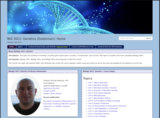
Principles and problems of heredity, including gene transmission, mutation, recombination, and function
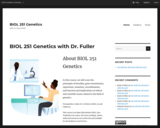
This course will provide students with an understanding of the principles and concepts of genetics, including the principles of heredity, including gene transmission, mutation, recombination, and function. The course will also explore ethical issues related to the field of research genetics and the implications of the use of genetics in treating modern disease. This course is recommended for students who wish to pursue a degree in the biological sciences and/or professional school (i.e., medical school, pharmacy school).
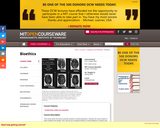
" This course does not seek to provide answers to ethical questions. Instead, the course hopes to teach students two things. First, how do you recognize ethical or moral problems in science and medicine? When something does not feel right (whether cloning, or failing to clone) ŰÓ what exactly is the nature of the discomfort? What kind of tensions and conflicts exist within biomedicine? Second, how can you think productively about ethical and moral problems? What processes create them? Why do people disagree about them? How can an understanding of philosophy or history help resolve them? By the end of the course students will hopefully have sophisticated and nuanced ideas about problems in bioethics, even if they do not have comfortable answers."
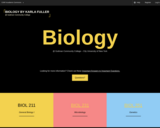
A biology site to house Biology 211: General Biology I, Biology 231: Microbiology, and Biology 251: Genetics at Guttman College.

In this lesson plan, students will learn the basic structure and function of DNA and RNA. They will also learn the process of gene expression. Finally, students will learn about the scientific contributor, Ernest Everest Just, and his contributions to the field of Biology.
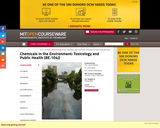
This course addresses the challenges of defining a relationship between exposure to environmental chemicals and human disease. Course topics include epidemiological approaches to understanding disease causation; biostatistical methods; evaluation of human exposure to chemicals, and their internal distribution, metabolism, reactions with cellular components, and biological effects; and qualitative and quantitative health risk assessment methods used in the U.S. as bases for regulatory decision-making. Throughout the term, students consider case studies of local and national interest.
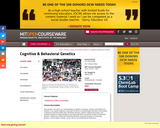
How genetics can add to our understanding of cognition, language, emotion, personality, and behavior. Use of gene mapping to estimate risk factors for psychological disorders and variation in behavioral and personality traits. Mendelian genetics, genetic mapping techniques, and statistical analysis of large populations and their application to particular studies in behavioral genetics. Topics also include environmental influence on genetic programs, evolutionary genetics, and the larger scientific, social, ethical, and philosophical implications.
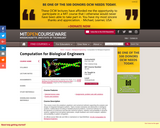
This course covers the analytical, graphical, and numerical methods supporting the analysis and design of integrated biological systems. Topics include modularity and abstraction in biological systems, mathematical encoding of detailed physical problems, numerical methods for solving the dynamics of continuous and discrete chemical systems, statistics and probability in dynamic systems, applied local and global optimization, simple feedback and control analysis, statistics and probability in pattern recognition.

Precise modification of faulty genes for repair has been one of the most important goals in medicine. It is now finally within the realm of possibility thanks to the gene editing tool CRISPR. This microbial adaptive immune system can copy and cut specific DNA sequences. This animation provides a visual introduction of this revolutionary genetic tool.

Precise modification of faulty genes for repair has been one of the most important goals in medicine. It is now finally within the realm of possibility thanks to the gene editing tool CRISPR. This microbial adaptive immune system can copy and cut specific DNA sequences. This animation provides a visual introduction of this revolutionary genetic tool.

This material introduces Linux File System structures and demonstrates how to use commands to communicate with the operating system through a Terminal program. Basic program structures and system() function of Perl are discussed. A brief introduction to gene-sequencing terminology and file formats are given.

This material introduces the AWS console interface, describes how to create an instance on AWS with the VMI provided, connect to that machine instance using the SSH protocol. Once connected, it requires the students to write a script to enter the data folder, which includes gene-sequencing input files and print the first five line of each file remotely. The same exercise can be applied if the VMI is installed on a local machine using virtualization software (e.g. Oracle VirtualBox). In this case, the Terminal program of the VMI can be used to do the exercise.

This material briefly reintroduces the DNA double Helix structure, explains SNP and INDEL mutations in genes and describes FASTA, FASTQ, BAM and VCF file formats. It also explains the index creation, alignment, sorting, marking duplicates and variant calling steps of a simple preprocessing workflow and how to write a Perl script to automate the execution of these steps on a Virtual Machine Image.

This material introduces the AWS console interface, describes how to create an instance on AWS with the VMI provided and connect to that machine instance using the SSH protocol. Once connected, it requires the students to write a script to automate the tasks to create VCF files from two different sample genomes belonging to E.coli microorganisms by using the FASTA and FASTQ files in the input folder of the virtual machine. The same exercise can be applied if the VMI is installed on a local machine using virtualization software (e.g. Oracle VirtualBox). In this case, the Terminal program of the VMI can be used to do the exercise.
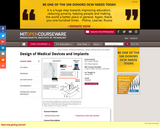
" This design course targets the solution of clinical problems by use of implants and other medical devices. Topics include the systematic use of cell-matrix control volumes; the role of stress analysis in the design process; anatomic fit, shape and size of implants; selection of biomaterials; instrumentation for surgical implantation procedures; preclinical testing for safety and efficacy, including risk/benefit ratio assessment evaluation of clinical performance and design of clinical trials. Student project materials are drawn from orthopedic devices, soft tissue implants, artificial organs, and dental implants."
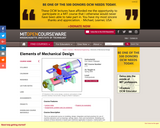
" This is an advanced course on modeling, design, integration and best practices for use of machine elements such as bearings, springs, gears, cams and mechanisms. Modeling and analysis of these elements is based upon extensive application of physics, mathematics and core mechanical engineering principles (solid mechanics, fluid mechanics, manufacturing, estimation, computer simulation, etc.). These principles are reinforced via (1) hands-on laboratory experiences wherein students conduct experiments and disassemble machines and (2) a substantial design project wherein students model, design, fabricate and characterize a mechanical system that is relevant to a real world application. Students master the materials via problems sets that are directly related to, and coordinated with, the deliverables of their project. Student assessment is based upon mastery of the course materials and the student's ability to synthesize, model and fabricate a mechanical device subject to engineering constraints (e.g. cost and time/schedule)."
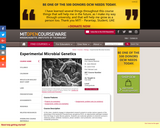
" In this class, students engage in independent research projects to probe various aspects of the physiology of the bacteriumĺĘPseudomonas aeruginosa PA14, an opportunistic pathogen isolated from the lungs of cystic fibrosis patients. Students use molecular genetics to examine survival in stationary phase, antibiotic resistance, phase variation, toxin production, and secondary metabolite production. Projects aim to discover the molecular basis for these processes using both classical and cutting-edge techniques. These include plasmid manipulation, genetic complementation, mutagenesis, PCR, DNA sequencing, enzyme assays, and gene expression studies. Instruction and practice in written and oral communication are also emphasized. WARNING NOTICE The experiments described in these materials are potentially hazardous and require a high level of safety training, special facilities and equipment, and supervision by appropriate individuals. You bear the sole responsibility, liability, and risk for the implementation of such safety procedures and measures. MIT shall have no responsibility, liability, or risk for the content or implementation of any of the material presented. Legal Notice "
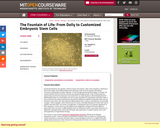
" During development, the genetic content of each cell remains, with a few exceptions, identical to that of the zygote. Most differentiated cells therefore retain all of the genetic information necessary to generate an entire organism. It was through pioneering technology of somatic cell nuclear transfer (SCNT) that this concept was experimentally proven. Only 10 years ago the sheep Dolly was the first mammal to be cloned from an adult organism, demonstrating that the differentiated state of a mammalian cell can be fully reversible to a pluripotent embryonic state. A key conclusion from these experiments was that the difference between pluripotent cells such as embryonic stem (ES) cells and unipotent differentiated cells is solely a consequence of reversible changes. These changes, which have proved to involve reversible alterations to both DNA and to proteins that bind DNA, are known as epigenetic, to distinguish them from genetic alterations to DNA sequence. In this course we will explore such epigenetic changes and study different approaches that can return a differentiated cell to an embryonic state in a process referred to as epigenetic reprogramming, which will ultimately allow generation of patient-specific stem cells and application to regenerative therapy. This course is one of many Advanced Undergraduate Seminars offered by the Biology Department at MIT. These seminars are tailored for students with an interest in using primary research literature to discuss and learn about current biological research in a highly interactive setting. Many instructors of the Advanced Undergraduate Seminars are postdoctoral scientists with a strong interest in teaching."
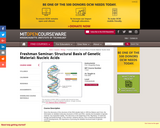
Since the discovery of the structure of the DNA double helix in 1953 by Watson and Crick, the information on detailed molecular structures of DNA and RNA, namely, the foundation of genetic material, has expanded rapidly. This discovery is the beginning of the "Big Bang" of molecular biology and biotechnology. In this seminar, students discuss, from a historical perspective and current developments, the importance of pursuing the detailed structural basis of genetic materials.